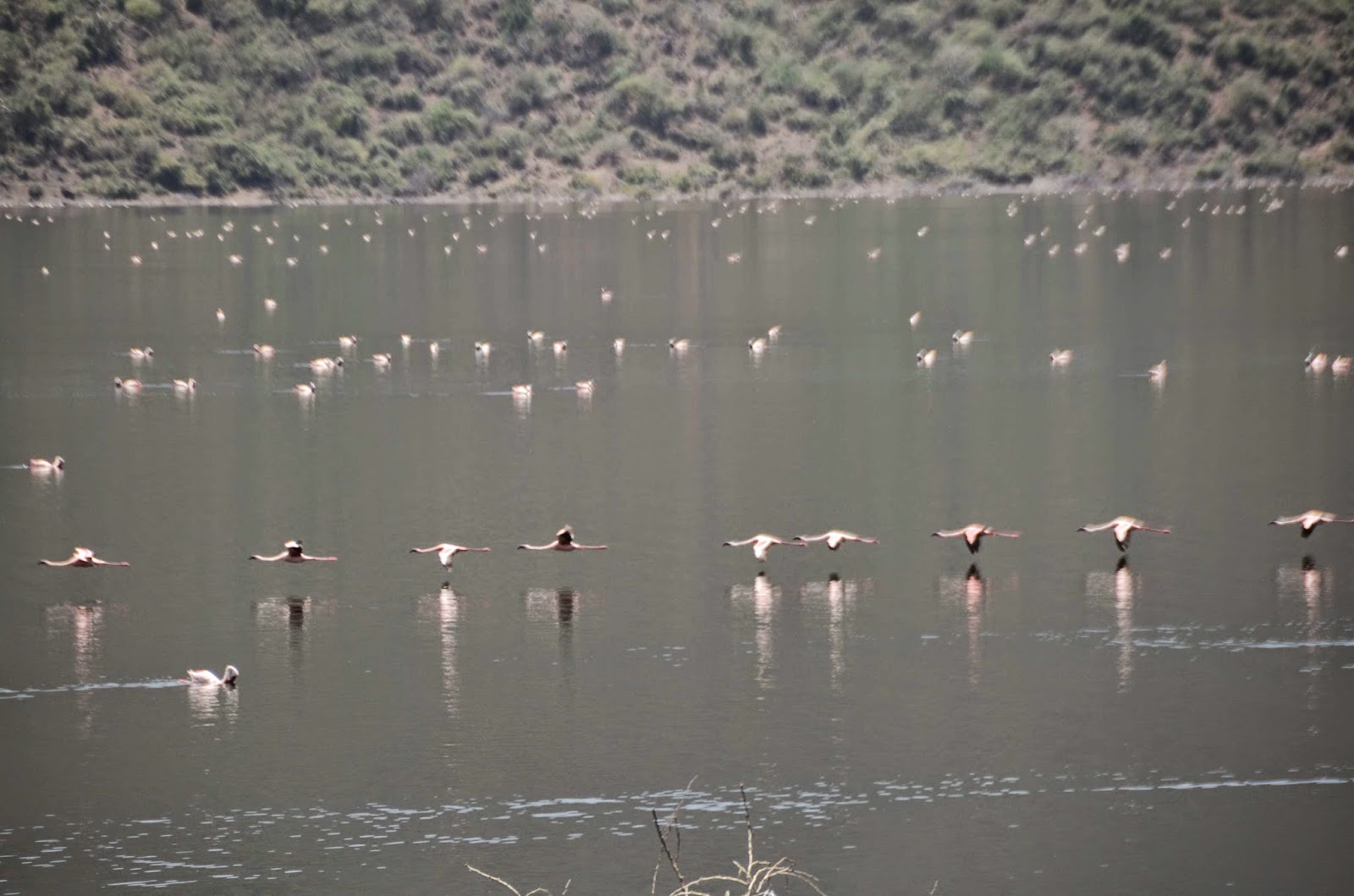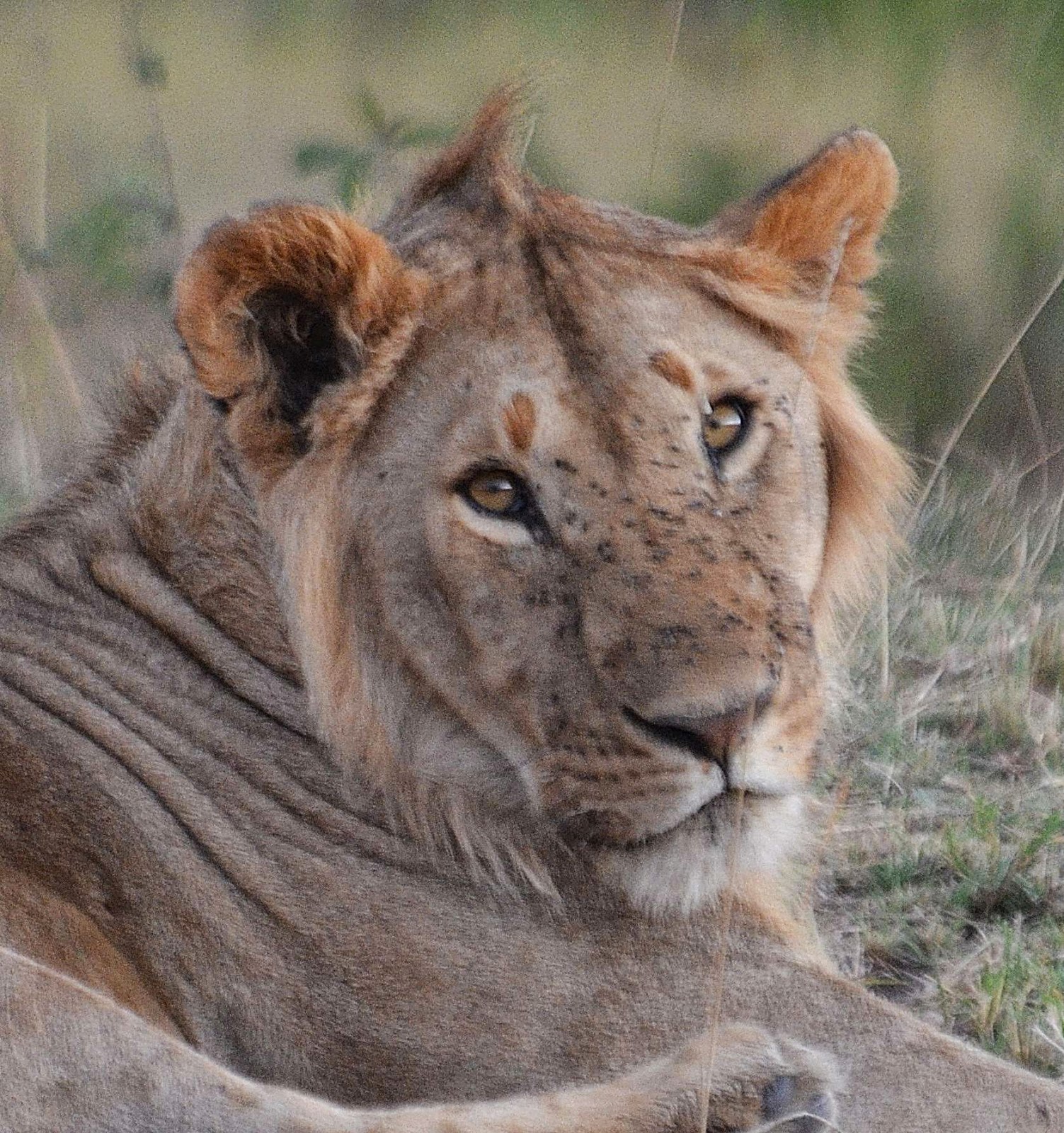I have just
realised that one of the best things about Kenya is the absence of McDonalds for at least 1000 kilometres. That’s right, not a
single one in Kenya and perhaps none in the whole of East Africa (although I am
guessing here).
However, do
not think that there is no fast food. Many of you know that developing
countries love their food on the run. It may not be nutritious but it is
usually yummy and cheap.
So here is
a brief guide to Kenyan fast food. I'm not talking about what you can get in
cafes and restaurants, but what you can buy from the street vendors in the market
places.
1. If you
go into a Kenyan café, kuku and chips is the big seller (kuku is chicken). Out
on the street chips are one of the standards. Vendors will sit with a fire under a large metal pot or wok full of oil.
The chips (fat ones) will be cooked in the oil. They will place too many chips
in the pot so they will not go crisp. They come out cooked but they are yellowish
and somewhat limp. As all good travellers know, at least they are cooked in hot oil (hopefully not too old) so they pose a low health risk.
Nutritional value; low
Price; very cheap (60c)
When available; after midday
2. The
hidden culinary gem in Kenya is the mundazi. It looks like a large triangular
doughnut, and is similarly fried in oil very quickly. It puffs up and develops
air pockets inside. The taste is similar to a doughnut, but definitely better.
Kenyans eat them plain, although we like them covered in icing sugar (as you
can see in the photo). They are wonderful eaten fresh from the pan. Older ones
go a bit leathery and the oil solidifies and detracts from the eating pleasure.
Nutritional value; low
Price; even cheaper (12c)
When available; all day (popular
in the mornings)
3. Roasted
maize. Australians are really not familiar with maize, although here it is the
most popular food by far. Maize is white corn that is not sweet, soft or juicy –
quite the opposite. A large percentage of maize is ground into flour but some
is boiled or roasted on the cob. Along major roads you will find people holding
up cobs of roasted maize, especially around lunch time. Travellers will stop,
buy their snack, eat the maize then throw the cob out of the window. The maize
is roasted on a grill like we would cook a sausage. The end product is still
very hard and chewy and is not a food that I enjoy.
Nutritional value; moderate
Price; as cheap as mundazis
(12c)
When available; lunchtime to
supper
4. This
country is tropical. You name the tropical fruit and you can get it on the
street. Even fruits like grapes, oranges and apples are quite readily available
(mostly imported from South Africa or Egypt).
The
tropical fruits are to die for. You will pick up a tree-ripened avocado for 12c,
a mango for 20c and five bananas for 25c. The secret is that they all come from
local farms and they are not picked before ripening. Pineapples are also
prevalent, but more expensive. We pay about $1.80 for pineapples, but they are
the best tasting pineapples on earth.
Nutritional value; high
Price; why aren't they this
cheap at home!
When available; as soon as the
stalls open
5. The
largest minority in Kenya are the Indians. They have been here so long that
Kenyans think chapatis are a Kenyan invention. Many cafes sell Indian dishes. Curries
are popular but don’t expect them spicy (Kenyans don’t go in for herbs and
spices).
On the
street you will often find bhajias. These are pieces of potato or other
vegetables deep fried in chick pea batter. They are the vegetarians snack food
of choice here (just ask Tabby), and they are delicious. The ‘batter’ is very
light and complements the vegetables beautifully. As you are beginning to see,
Kenyans enjoy their fried food. It’s probably just as well because, as already
stated, frying kills a multitude of bad things.
Nutritional value; moderate
Price; moderate ($1.00)
When available; lunchtime and
beyond
6. Talk
about fish in East Africa and you are talking tilapia. It isn't a pretty fish, but it tastes quite sweet. Tilapia are indigenous to the
region, many coming out of Lake Victoria. It is not a large fish and is
usually cooked whole.
The fish is
shallow fried in a wok over an open fire. Sometimes I doubt its freshness, and
have seen it on sale in a dried form. Vendors in our market claim that the fish
has arrived from Lake Victoria that very day. Due to a lack of refrigeration, I
think sometimes it is sold cooked and then the buyer re-heats it for supper. Des
is a fish lover and she doesn’t like tilapia. I am not that keen on fish but I
thought it very tasty. Perhaps it depends upon the cooking method and skill of
the cook.
Nutritional value; moderate?
Price; on the expensive side
($2.40)
When available; evening
Interestingly, although ugali (the maize porridge/cake) is the most popular food in Kenya, it is rarely seen on the streets. Ugali-starved Kenyans prefer to go to a cafe or hotel to have their ugali served to them with side orders of greens or meat.
So there you are, why indeed do you need a McDonalds when you have all that!





































